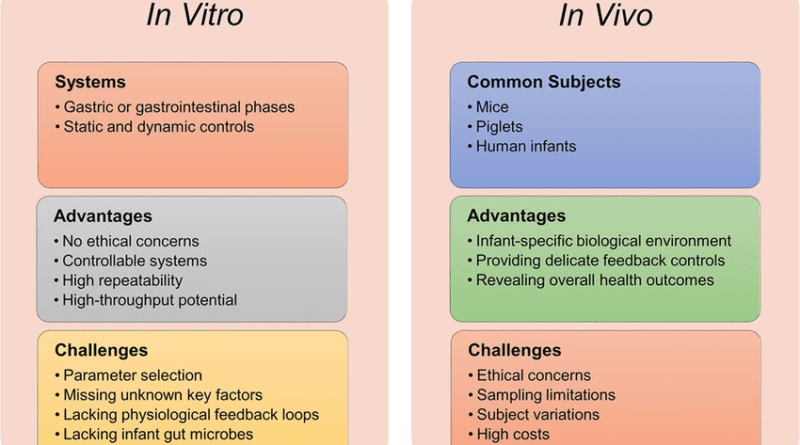An Overview of Digestibility Trials (In-Vivo and In-Vitro) in Animal Breeding
Digestibility trials when carried out on live animals are often expensive to run, time- and even difficult. These limitations have led to the need to carry out digestibility trials using laboratory methods that can mimic the biological conditions of the digestive system of live animals.
True digestibility will normally make allowance for endogenous losses. Endogenous losses are a result of the action of digestive enzymes, shed-off intestinal cells, and microbial matter. To quantify endogenous losses, the fecal output of the animal will be means.
Definition of digestibility and digestibility trials
Digestibility can be said to be the proportion of feedstuff that has been absorbed from the digestive system into the bloodstream of an animal.
Digestibility is also a measure of the differences between intake and feacal output with allowance made for that part of the feces that is not a product of feed (they include, the cells shed from intestinal walls, bacteria, and residues of digestive juice). Digestibility trials give a measure of the relative feeding value of forage.
Significance of Digestibility Trials
Chemical analysis of forage cannot give a good picture of the feeding value of every type of forage. Biological methods are still the best for evaluation of the feeding value of forages, whether the trial is carried out on a live animal or under a simulated condition (similar conditions as found in the rumen of the life animal).
Biological methods will give the optimum results of the type of forage suitable for different ruminant species under varying conditions.
Read Also Best Feeds for Young and Adult Ruminant Animals
Meaning of In-Vivo and In-Vitro Digestibility

In vivo, digestibility involves feeding the livestock the test forage orally to evaluate the feeding value of the feed.
In vitro digestibility involves simulation of the rumen condition (anaerobic environment, having a neutral pH) of the species of livestock and introducing the test forage to evaluate the feeding value.
Read Also Why Cows Can’t Expel Placenta After Delivery and the Solution
Merits and Limitations of In-Vivo Trials
The merits of in vivo digestibility trials are;
1. Some of the procedures employed for in vivo trials can be used to estimate two different types of feed within the same trial period.
2. The trial can also be used for estimating digestibility in grazing animals.
The limitations of in-vivodigestibility trials are;
1. It can be expensive to conduct as it involves the provision of all the aspects of management of the live animals with the attendant costs.
2. It is labor-intensive.
3. There is the welfare concern of feeding untested forages to animals.
4. The animals may be stressed due to the limitations imposed on their movement during feeding and feacal collection.
Merits and limitations of In-vitro trials
The merits of in-vitro digestibility trials are;
1. It is a more efficient predictor of digestibility than some procedures employed for in-vivo trials.
2. It can be used to evaluate multiple samples of forage types in a single trial.
The limitations of in vitro digestibility trials are;
1. There are animal welfare concerns because some in vitro procedures will require animals to be fistulated.
2. It is labor-intensive.
3. Digestibility may be influenced by variability in the composition and activity of the digestive enzymes or inoculum used
4. The procedure does not explain the mechanism of digestibility
In conclusion, digestibility trials are necessary for the evaluation of feed resources and for the determination of the effects of a feed resource on the rumen environment. There is the need to utilize in-vivo and in-vitro techniques to observe and measure the animal’s response to dietary manipulations given the limited feed resources in the developing economy.
There is a need to know true digestibility and not only apparent digestibility. Digestibility trials aid in the identification of the true measure of feeding value of forages. Biological methods are the most suitable means of evaluating the value of the feed resources.
In vivo, digestibility trial is oral feeding of test forage and collection of feacal samples while in vitro, digestibility trial is done by putting representative samples of test forage in a simulated rumen environment to evaluate feeding value. There are associated merits and limitations to the use of both methods of digestibility.
Read Also How to Start an Urban Farm









